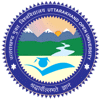|
Ch 1: Technology Framework in e-Learning
- 1.1: Introduction
- 1.2: Technology Analysis
- 1.3: Appropriate Technology
|
|
Ch 2: Learners Profile Analyze
- 2.1: Resources Availability At Learner's End
- 2.2: Selection of Technology To Match Resources
- 2.3: Meeting Objectives
|
|
Ch 3: Available Tools & Technologies for Delivering e-Content
- 3.1: Approaches for delivering e-Content.
- 3.2: Multimedia Learning Resources.
- 3.3: Technologies in Textual Deliveries.
- 3.4: Audio Technologies & Tools
- A) Audio File Formats
- B) Compression Techniques
- C) Audacity Audio Tool
- 3.5: Video Technologies & Tools
- A) File Formats
- B) Compression techniques
- C) Techniques by Easynow
|
|
Ch 4: Structuring & Presenting e-Content
- 4.1: Structuring content based on pedagogical concepts
- 4.2: Presenting content in different output formats
- 4.3: Authoring tools to create and manage content
- 4.4: Comparing eLML to other markup languages
- 4.5: Usability and marketing studies
|
|
Back To Course 5
|
|
Chapter 3.2 - Multimedia Learning Resources
One of the key characteristics of e-Learning is its capability to integrate different media, such as text, picture, audio, animation and video to create a multimedia instructional material, promoting the reading interests and willingness of the learner. The use of multimedia elements such as images and different animated formats is important here. Images are very useful when it comes to explaining difficult issues. Some difficulty concepts in the laboratory experiments for instance, can be understood much more easily when explained using an appropriate multimedia object.
Meeting Objectives
e-Learning environments is expected now, more than ever, to deploy and manage learning content that can be easily searched and retrieved during an auto-learning phase as well as to be reused for different educational purposes. With e-Learning environment learners are allowed to easily locate and access the content of their preference. The learning object approach is considered to be an effective way of chunking down the materials to suit user’s needs.
To have a meaningful learning, one or an aggregation of learning objects should be able to fulfill the learning objective. Furthermore, the learning object approach will make the possibility of learning content to be easily accessible and reused. With learning object approach, SCORM standards can be used to provide standard ways of content aggregation, packaging and transportation to the end users.
There are many tools for designing and implementing E-content are available in the market. These packages range from the simple to use to complicated ones that need expert computer programmers or developers of E-content in form of Audio, Video, animation, Text Etc.
Next
|
|
